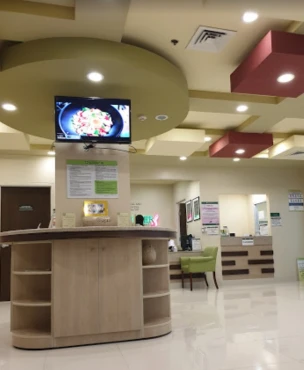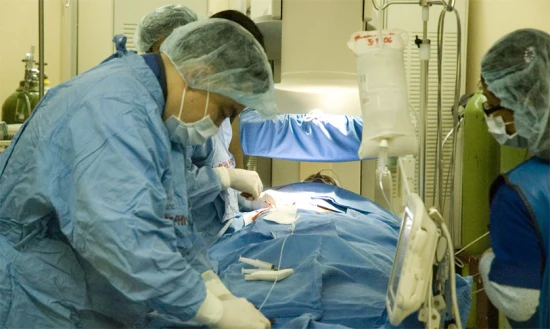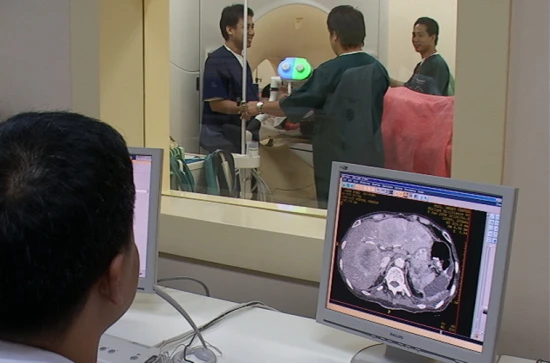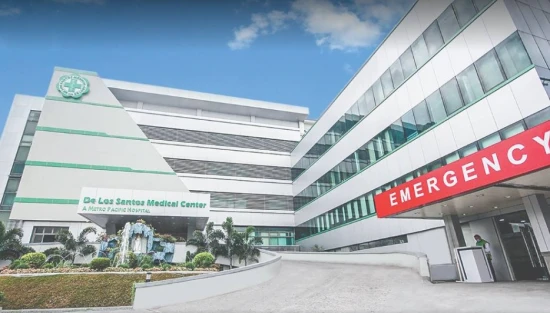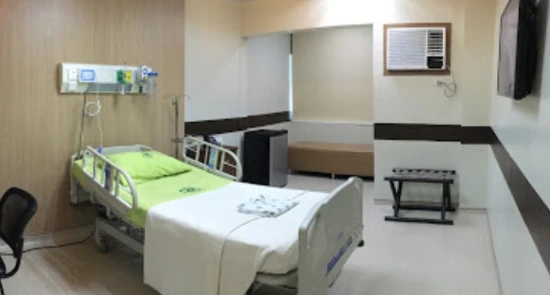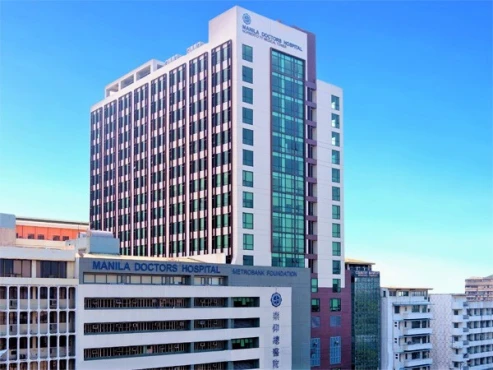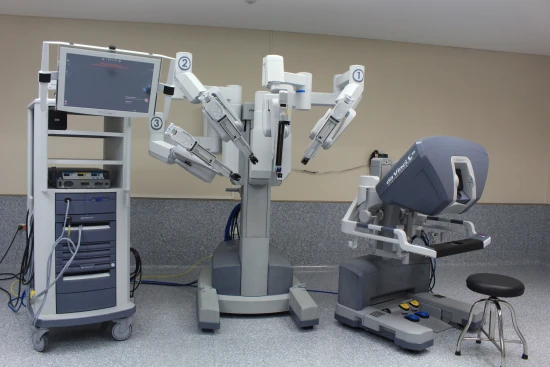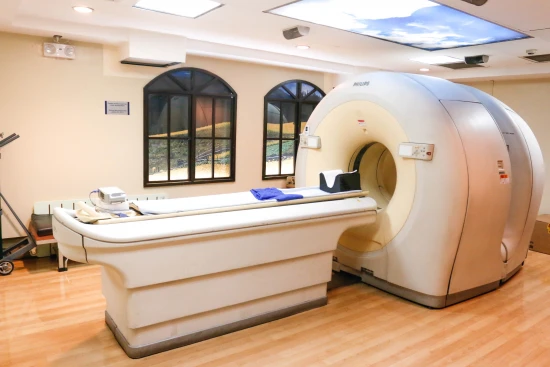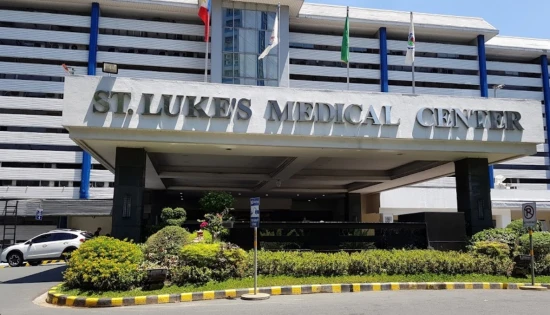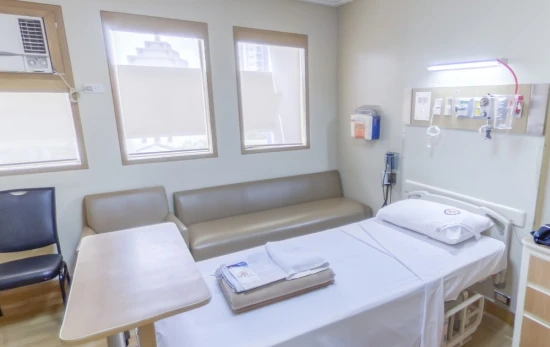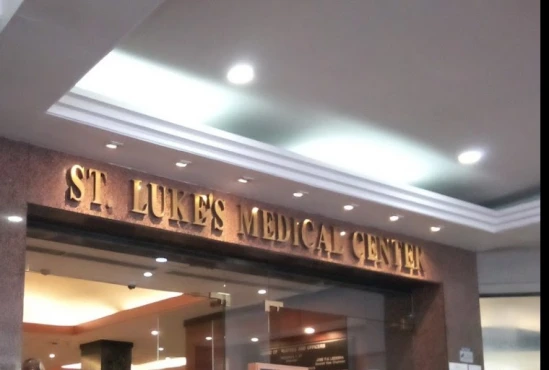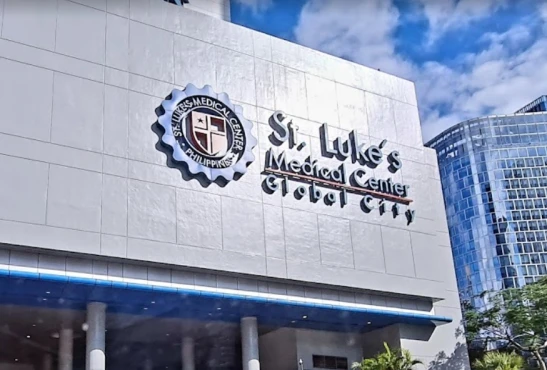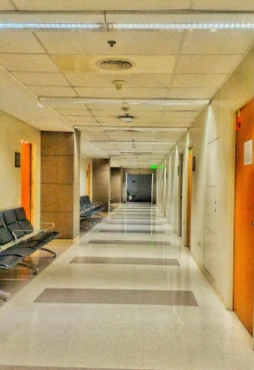Patent foramen ovale (PFO) treatment in 1 Cardiac surgery and Vascular surgery clinic in Muntinlupa
1 clinic specializing in Cardiac surgery and Vascular surgery providing treatment of
Patent foramen ovale (PFO)
Patent foramen ovale (PFO) is a common congenital heart defect where a small hole between the upper chambers of the heart fails to close after birth. It can allow blood clots to pass from the right to the left side of the heart, potentially causing stroke or other complications.
Read more...
disease in Muntinlupa.
Besides this clinic there are 6 Cardiac surgery, Vascular surgery clinics in Philippines.
Such diseases are treated by Asian Hospital and Medical Center (AHMC): Abdominal aortic aneurysm (AAA), Abnormal uterine bleeding (AUB), Acute ST-elevation myocardial infarction (STEMI), Atrial septal defect (ASD), Patent foramen ovale (PFO), and others.
-
Atrial septal defect (ASD) repair in children
≈ $16,684
-
Percutaneous ASD closure
≈ $1,038
-
NobleStitch™ PFO closure procedure
by request
-
Dual chamber pacemaker insertion
≈ $4,338
-
Coronary artery bypass graft (CABG)
≈ $19,411
-
Heart valve replacement
≈ $21,097
-
Heart valve repair
≈ $24,968
-
Aortic valve replacement (AVR)
≈ $21,960
-
Mitral valve replacement (MVR)
≈ $17,352

6 nearby similar clinics in Philippines
Perhaps you should consider 6 more clinics we have found nearby basing on your Location, Disease filters applied.
-
Atrial septal defect (ASD) repair in children
$10,202 - $14,253
-
Percutaneous ASD closure
≈ $1,038
-
NobleStitch™ PFO closure procedure
by request
-
Pulmonary angiography
≈ $1,046
-
Dual chamber pacemaker insertion
$3,229 - $4,363
-
Coronary artery bypass graft (CABG)
$11,382 - $15,865
-
Heart valve replacement
≈ $21,097
-
Heart valve repair
$11,366 - $19,867
-
Aortic valve replacement (AVR)
≈ $21,960
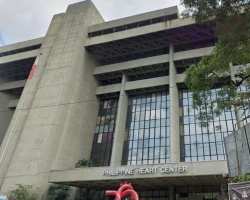
-
Percutaneous ASD closure
$1,038
-
NobleStitch™ PFO closure procedure
by request
-
Pulmonary angiography
≈ $1,046
-
Dual chamber pacemaker insertion
$3,633
-
Coronary artery bypass graft (CABG)
$18,582
-
Off-pump coronary artery bypass surgery
≈ $17,847
-
Permanent pacemaker implantation
$2,699 - $3,633
-
Cardiac catheterization
≈ $2,145
-
Percutaneous closure of ventricular septal defect (VSD)
$3,623
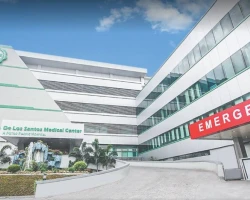
-
Percutaneous ASD closure
≈ $1,038
-
NobleStitch™ PFO closure procedure
by request
-
Dual chamber pacemaker insertion
≈ $4,338
-
Carotid endarterectomy (CEA)
≈ $5,505
-
Peripheral artery angioplasty and stent placement
≈ $5,147
-
Carotid angioplasty and stenting
≈ $6,468
-
Uterine artery embolization (UAE)
≈ $3,405
-
Permanent pacemaker implantation
≈ $4,194
-
Renal artery angioplasty and stenting
≈ $4,337

-
Atrial septal defect (ASD) repair in children
≈ $16,684
-
Percutaneous ASD closure
≈ $1,038
-
NobleStitch™ PFO closure procedure
by request
-
Pulmonary angiography
≈ $1,046
-
Dual chamber pacemaker insertion
≈ $4,338
-
Carotid endarterectomy (CEA)
≈ $5,505
-
Foam sclerotherapy (Unilateral)
≈ $703
-
Coronary artery bypass graft (CABG)
$21,160
-
Heart valve replacement
$21,160

-
Dual chamber pacemaker insertion
≈ $4,338
-
Foam sclerotherapy (Unilateral)
≈ $703
-
Coronary artery bypass graft (CABG)
$21,160
-
Heart valve replacement
≈ $21,097
-
Heart valve repair
≈ $24,968
-
Aortic valve replacement (AVR)
≈ $21,960
-
Mitral valve replacement (MVR)
≈ $17,352
-
Transcatheter aortic valve replacement (TAVR)
≈ $30,688
-
Abdominal endovascular aneurysm repair (EVAR)
≈ $16,882

-
Arteriovenous (AV) fistula surgery
≈ $1,887
-
Endovascular thrombectomy
≈ $3,535
-
Pericardiocentesis
≈ $1,792
-
Pulmonary artery thromboendarterectomy
≈ $11,306
-
Surgical thrombectomy
≈ $9,080
-
Reconstructive surgery for peripheral artery disease (PAD)
≈ $10,061
-
Arteriovenous (AV) graft surgery
≈ $2,920
-
Secondary Cimino arteriovenous anastomosis surgery
≈ $1,584
-
Peripheral artery bypass
≈ $13,957
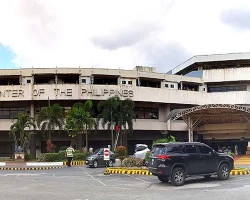
Countries with the highest number of clinics treating the diseases:
Patent foramen ovale (PFO):
Related procedures:
Quick navigation
- Aortoiliac allografting ≈ $13,631
- Arteriovenous malformations (AVM) embolization ≈ $8,968
- Balloon angioplasty and stenting of aorta coarctation ≈ $9,063
- Cardiac catheterization ≈ $2,145
- Catheter embolization ≈ $3,127
- Coarctectomy in children ≈ $9,315
- Coil embolization of intracardiac shunts and fistulas ≈ $5,387
- Embolization of peripheral arteries aneurysm ≈ $16,329
- Endoscopic vein harvesting (EVH) for coronary artery bypass graft surgery (CABG) ≈ $325
- Endovascular thrombectomy ≈ $3,535
- Femoral-popliteal bypass graft surgery ≈ $6,920
- Heart tumor surgery ≈ $15,820
- Intraaortic balloon pump (IABP) procedure ≈ $2,421
- Left atrial appendage occlusion ≈ $8,907
- MAZE procedure ≈ $15,101
- Minimally invasive valvular heart surgery with valve repair or replacement by request
- NobleStitch™ PFO closure procedure by request
- Open-heart intracardiac foreign body removal ≈ $21,098
- Patent ductus arteriosus (PDA) open heart surgery in adults ≈ $6,894
- Pelvic vein embolization (PVE) ≈ $2,871
- Abnormal uterine bleeding (AUB)
- Acute renal hemorrhage
- Aortic valve insufficiency
- Aortic valve stenosis
- Aortoiliac occlusive disease (AIOD)
- Arterial embolism
- Arteriovenous malformations (AVMs)
- Atrial fibrillation (AFib)
- Benign prostatic hyperplasia (BPH)
- Benign spinal tumor
- Brain aneurysm
- Brain arteriovenous malformation (AVM)
- Chronic limb ischemia
- Coarctation of the aorta (CoA)
- Deep vein thrombosis (DVT)
- Foreign bodies in the heart
- Heart failure
- Heart tumor
- Heart valve disease
- Kidney cancer



